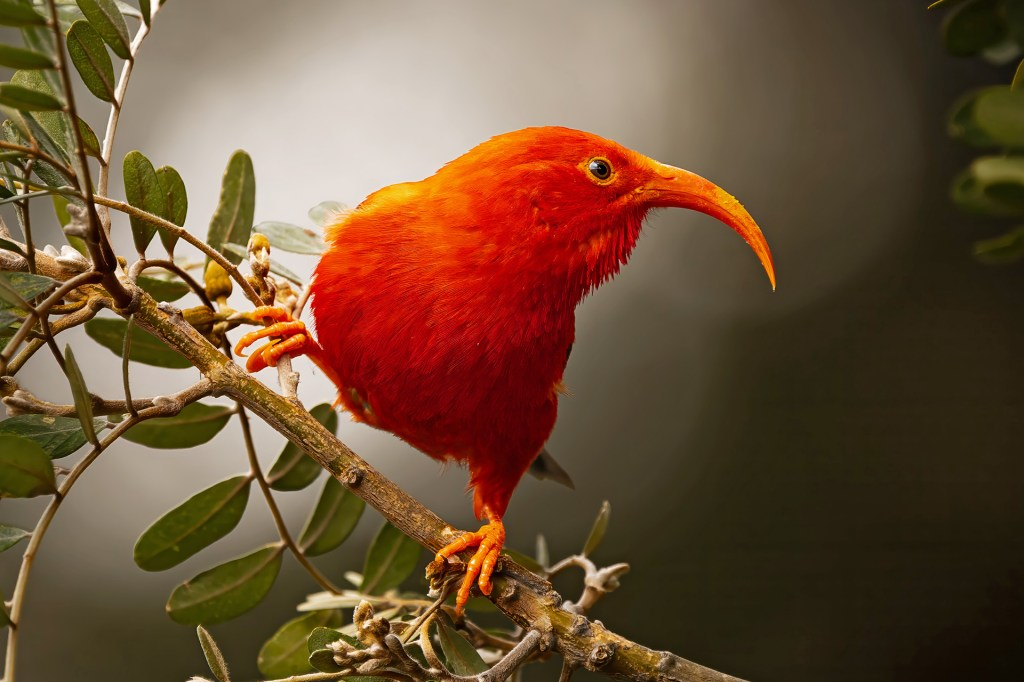
Twice a week, Adam Knox jumps into a four-wheel-drive pickup and climbs to a forest high in the mountains. “You feel like you’re in Jumanji, or one of those adventure-type movies,” Knox says. “This is where the native birds live.” They’re in danger of going extinct because of avian malaria, a disease spread to birds by mosquitoes. Knox is a drone pilot. He goes into the forest to release more mosquitoes. That may sound strange, but it’s cutting edge. Instead of chemicals, “this technique uses mosquitoes to fight mosquitoes,” says scientist Christa Seidl.
And now, conservationists are delivering mosquitoes to the forest by drone. Knox calls this a “breakthrough”. When the mosquito project began, in 2023, helicopters were the only available means. “It’s been a long road to get here, with a lot of trial and testing,” he says. “But at this point, we have a system that can fly in these difficult environments.” Plus, drones are quieter, cost less, and allow more flexibility with timing. Since April, Knox has been using drone technology to help drop half a million mosquitoes a week.
Honeycreepers (管舌雀) live in Hawaii, and nowhere else. There used to be more than 50 species. Now there are only 17. Unlike honeycreepers, mosquitoes are not native to Hawaii. Even after they were introduced, they lived only at lower elevations. But as temperatures have warmed, mosquitoes have moved higher into the mountains — to honeycreeper habitat. A single mosquito bite can kill a honeycreeper.
The mosquitoes Knox drops into the forest are in biodegradable pods (可生物降解的胶囊) holding 1,000 insects each. The mosquitoes are males, so they don’t bite or transmit disease. They’ve been raised in a lab and bred to carry a natural bacteria that prevents them from reproducing with wild females. Pods are loaded into the drone at the launch site. After liftoff, Knox releases them by remote control. When these mosquitoes mate with wild ones, the eggs that are produced won’t hatch. “This lowers the mosquito population over time,” Seidl says, especially since most females mate only once. It also gives honeycreepers time to bounce back. “The goal,” Farmer says, “is to get them off the endangered species list.”
Conservationists aren’t sure how long the recovery will take. Until then, Knox will continue doing drone drops.
原创编写 版权所有 侵权必究! 每日更新 个性化阅读 英语飙升!1.1.Why does Adam Knox go into the mountain forest?
A To experience adventures.
B To protect native birds.
C To study mosquito diseases.
D To drive his pickup truck.
解析:选B。B 细节理解题。根据第一段Knox所说的“This is where the native birds live.”以及他进入森林“to release more mosquitoes”的目的可知,他这么做是因为当地的管舌雀(native birds)正因蚊子传播的疾病而濒临灭绝“in danger of going extinct”。因此,他的最终目的是保护这些本地鸟类。A项是他的感受而非目的;C项是手段而非最终目的;D项是方式而非原因。故选B。
2.2. Which is NOT a drone advantage mentioned in the passage?
A Reduced cost.
B Quieter sound.
C Faster delivery.
D Better timing.
解析:选C。C 细节判断题。第二段明确列出了无人机的优势:cost less、quieter、allow more flexibility with timing。C项在文中完全没有被提及。故选C。
3.3. What enabled mosquitoes to reach honeycreeper habitats?
A Higher temperatures.
B Human interventions.
C Forest landscape alterations.
D Bird migration patterns.
解析:选A。A 细节理解题。第三段明确说“as temperatures have warmed, mosquitoes have moved higher into the mountains”随着气温升高,蚊子迁移到了更高海拔的山区。B项是蚊子最初被引入夏威夷的原因,但并非其进入高海拔地区的原因;C项和D项在文中均未提及。故选A。
4.4.How do the released mosquitoes ultimately help honeycreepers?
A By reducing pest population.
B By providing food source.
C By breeding with wild ones.
D By carrying beneficial bacteria.
解析:选A。A 推理判断题。最后一段解释了这种生物防治法的原理:释放的雄蚊携带细菌,与野生雌蚊交配后产下的卵“won’t hatch”(无法孵化),从而“lowers the mosquito population over time”(逐步降低蚊子种群数量)。蚊子数量减少,传播疾病的几率就降低,从而给管舌雀恢复种群的机会。因此,其最终方式是减少害虫(蚊子)的数量。B项错误;C项和D项是实现“减少害虫数量”这一目标的具体手段和方式,而非“最终如何提供帮助”的本质。故选A。